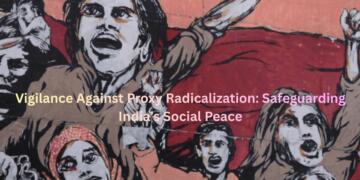The Tamil v Sanskrit debate, which has been at the top of the agenda of Dravidian nationalists in the state of Tamil Nadu has yet again stirred a major controversy in the southern state.
This time around, it is the consecration of the 1000-year-old Peruvudaiyar Kovil aka Brihadeeswara Temple in Thanjavur district of Tamil Nadu that has triggered the Tamil vs Sanskrit debate.
The kumbabishekam (consecration) of the temple was held on February 5 after a period of 23 years. Before this, the consecration ceremony was last held at the historic temple in 1997.
However, this time around the ceremony has led to an intense Sanskrit vs Tamil debate- a necessary dimension of the Dravidian vs Aryan political narrative peddled by Dravidian nationalists and regional Dravidian political outfits like the DMK.
The ardent supporters of Tamil hegemony in the state argue that the Tamil language is superior to the Sanskrit language. Such elements create xenophobic fears claiming that Sanskrit is imposed by “external forces”.
The essence of the bitter, avoidable debate around the consecration ceremony held at the 1,000-year-old Thanjavur temple also essentially revolves around the Sanskrit vs Tamil debate.
The Dravidian outfits in the state prefer Tirumurai, a 12-volume compendium of Tamil hymns in praise of Lord Shiva when it comes to the consecration of the temple, instead of the Agamas.
This is where Dravidian political outfits like the Stalin led DMK also come into the picture. Last month, MK Stalin too had endorsed the Thanjavur Big Temple Right Reclamation Committee’s demand of getting the consecration of the ancient temple conducted in the Tamil language.
Stalin essentially tried to drag the consecration of temple into the emotive ‘Tamil vs Sanskrit’ issue. He went on to remark that applying the Tamil language in temples and social justice was part of a larger cultural struggle.
Trying to capitalise by raking up Tamil nationalism, he referred to consecration carried out in the temples in the state during the days of the DMK regime and the fact that the party had replaced the term ‘kumbabisekam’ with ‘kudamulukku’.
However, the view taken by Dravidian chauvinists and outfits like the DMK doesn’t find much support with the actual history of the temple.
Archaeologists like Dr Nagaswamy and T. Sathyamurthy, former Superintending Archaeologist of the Archaeological Survey of India (ASI), believe the question is not that of linguistic supremacy.
According to them, the temples in Tamil Nadu always followed the Agama principles, a Sanskrit language set of regulations governing all possible aspects of temples, including design, construction, scriptures and most importantly, rituals.
According to Dr Nagaswamy, “The Agamas say that any ritual in a temple is not complete without the rendering of Tamil hymns. To render Thevaram, Rajaraja had appointed 50 persons, known as Oduvar.” The Tamil Nationalists, however, wanted complete exclusion of the Sanskrit language in the consecration of the temple.
The matter was unsurprisingly dragged to the Madurai Bench of Madras High Court, which dismissed a batch of petitions for conducting the consecration ceremony of the Brihadeeswarar Temple (commonly known as the Big Temple) in Tamil alone.
The Court refused to accept the argument that till now the ceremony was conducted in Tamil alone to the complete exclusion of the Sanskrit language.
The Court also rejected the contention of the Tamil language being undermined, after the Hindu Religious and Charitable Endowments (HR and CE) submitted a counter wherein it stated that the consecration would be held in both Sanskrit and Tamil.
The anti-Sanskrit propaganda of Dravidian politicians like MK Stalin, Vaiko and Seeman gets called out owing to this High Court verdict.
In fact, even according to a senior historian, who has worked extensively on the Big Temple, quoted by the Indian Express, has also opined that Tamil customs should not be confused with Agamas.
He said, “In Tamil history, all the Shaiva temples, including the ones built by the Kings, follow all the rituals prescribed as per 28 Agamas. From selecting the land for the temple to the installation of Idols, maintaining the sanctum, administrating the temple, everything is mentioned in Agamas and it is present in Sanskrit only.”
The senior historian added, “There is no historical reference that Kudamuzhuku or any other temple function has been performed in Tamil. So breaking the tradition and performing in Tamil for political gain or any other hidden agenda is not appreciable.”
It is clear that there is no substance behind the claim that the Tamil language is the sole language in which consecration is to be conducted.
In fact, if we take a look at historical realities and the opinion of learned archaeologists, it becomes clear that Agamas, authoritative Hindu texts written in Sanskrit, are followed in Shaiva temples in Tamil history.
It is beyond comprehension how ostensible atheists are today demanding that consecration at the Big Temple should have been conducted in the Tamil language exclusively.
The tradition of performing consecration in Sanskrit at several major, historic Tamil temples is a big unifying factor as far as Hindus are concerned. It is the liturgical language for Hindus across almost the whole of India, something that doesn’t really fit in the Aryan vs Dravidian narrative that some regional players in Tamil Nadu have been peddling for decades.
This is particularly worrisome for those whose political survival is dependant upon the Dravidian vs Aryan (Tamil vs Sanskrit) political narrative, the scientific and historical basis of which have been discredited, but continues to dominate Tamil Nadu’s politics thanks to the parties that rely greatly on culturally and linguistically dissociating Tamil Nadu from the rest of India.
This is why Dravidian outfits deliberately triggered an avoidable ‘Tamil vs Sanskrit’ debate in the context of the consecration of the 1,000 years old Brihadeshwara Temple.
































